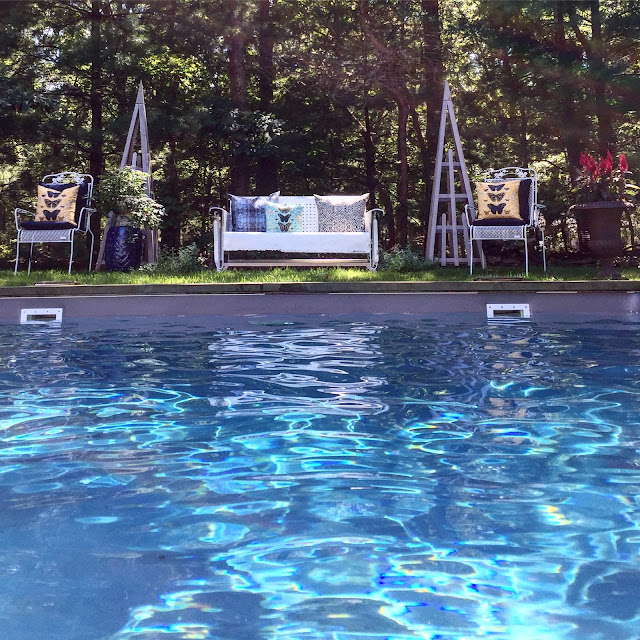TEXTILE DIARIES: As Summer Heats Up- A Little Bit About Seersucker
As a textile designer, I'm literally obsessed with fabric. I spent the better part of my 20s and 30s after graduating from interior design school at Parsons School of Design working as a fabric shopper. It was certainly the best way to learn the design business here in New York City, and I quickly learned every fabric house. With one glance I could tell you where the fabric is from- some of my favorites are Cowtan & Tout; Scalamandre; Brunschwig & Fils; Hinson; Hines & Co., Schumacher and the list goes on. I like chintz, cottons prints, woven fabric, cut velvets but one of my favorites (not used often in the home) is Seersucker which is either worn or used in the summer months and valued for how lightweight and cool the puckered design is. To me, creating a light pair of drapes in seersucker is on my "to do" design list. I envision them light and drapey maybe with a tape trim cascading down the inside edge in a pale blue and white stripe. I learned that during the Victorian era Seersucker was used often in bed ticking, bedding and night clothing.
I think it is very styish to see a man decked out in a tailored blue and white Seersucker suit. I read up recently on the fabric to find out where it originated. The name of this striped and puckered beauty is Hindi meaning "milk and sugar" because of the three dimensional stripes. When it was traded in the 1600s in India- the "milk and sugar" name came from the original tan and white striped coloring. Later the Brits coined the phrase "seersucker" and made it popular during the Colonial era when they traveled often to the balmy Caribbean to trade goods.
Because it was plentiful and affordable here in the States it was originally used by the working class for worker's clothing, and for young boy's railroad striped overalls. However in the 1920s through the 1950s, the college preppy Ivy League college set made it popular wearing suits with red bow ties and soon the blue colorway was popular. Menswear company Brooks Brothers and the like started producing them, and soon fashion designers followed. Perfect for the more relaxed lifestyle here in the States as it doesn't require ironing and the wash and wear makes it for a very easy wear. You can literally throw it in the washing machine!
HOW IT's FABRICATED- The cotton fabric is created by a slack-tension weave where the threads are wound to create these narrow stripes that are in the warp direction and ongrain. When woven, the threads group together giving off a wrinkled slightly raised appearance in parts. All of this explains why this light cotton textile is perfect to use in the hot summer months as the raised design keeps the fabric off of the skin creating a cooling effect. Linen is also a popular fabric in summer but we all know it wrinkles quite easily. Seersucker is popular for it's wearability and lack of wrinkling.
Because it was plentiful and affordable here in the States it was originally used by the working class for worker's clothing, and for young boy's railroad striped overalls. However in the 1920s through the 1950s, the college preppy Ivy League college set made it popular wearing suits with red bow ties and soon the blue colorway was popular. Menswear company Brooks Brothers and the like started producing them, and soon fashion designers followed. Perfect for the more relaxed lifestyle here in the States as it doesn't require ironing and the wash and wear makes it for a very easy wear. You can literally throw it in the washing machine!
HOW IT's FABRICATED- The cotton fabric is created by a slack-tension weave where the threads are wound to create these narrow stripes that are in the warp direction and ongrain. When woven, the threads group together giving off a wrinkled slightly raised appearance in parts. All of this explains why this light cotton textile is perfect to use in the hot summer months as the raised design keeps the fabric off of the skin creating a cooling effect. Linen is also a popular fabric in summer but we all know it wrinkles quite easily. Seersucker is popular for it's wearability and lack of wrinkling.
Happy Nesting











